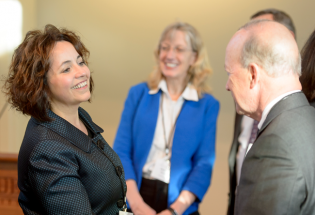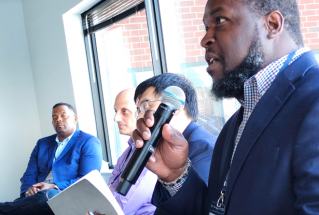Engagement with small businesses: Plenty of opportunity but limited bandwidth
Excerpted from the March 2023 issue of University-Industry Engagement Advisor. UIDP members can view the entire issue here.
It’s not that industry engagement executives have anything against working with smaller companies; in fact, the idea of working with these companies, including start-ups, can be the beginning of an exciting process as both the company and the partnership grow. But corporate engagement leaders admit they sometimes simply lack the time required to pursue these companies as much as they’d like.
“The biggest problem for all of us is how to make the best use of our time,” says Nathan K. Utz, vice president of Purdue’s Office of Industry Partnerships. “One of the beautiful things that made me shift from Notre Dame to Purdue is also a problem; there’s so much industry because of size and scale.”
In fact, he says, “we have this conversation every day and every week,” and he stresses that there is no shortage of opportunities, just a shortage of time and resources. “I absolutely I think start-ups and small companies have a lot to offer universities — and the entire ecosystem — and we do engage at those levels — just not at the proactive level we do with the Fortune 500 companies that are obvious targets.”
“There are several layers to this landscape map,” adds Kelsey S. Evans, executive director for corporate relations at the University of Texas-Austin. “I would say on the whole we get philanthropic gifts, research, and student [support] from nearly 400 companies a year, and of that, only about 175 are under active management from development professionals — the Microsofts, the Googles, the Exxon Mobils,” she says. “That means an awful lot of companies’ interactions are probably single faculty members and a single member of the company — or a ‘niche’ connection. That’s great; we want and need that to be happening. There are only so many ways to feed the dragon, and you need all sources in. I love that we have more companies on our tally list than we are actively managing.”
Having said that, Evans continues, “we are also in the very fortunate position of tracking companies moving here after the pandemic, and we have close to 310 that have moved [to Austin] in the last handful of years. My team, and the university as a whole, are very cognizant of [the question] how do we create pathways in for these new companies, to engage our students, faculty, and their employees? In my dreams I’d love to have an advancement professional on my team dedicated to these new companies, big or small, and the small ones in particular deserve special attention.”
Working with such companies, she explains, “is like going to Vegas. All bets do not win, but if you engage and they grow, it has enormous potential for payoff on the back side.”
Leah Aschmann, director of corporate relations in the Office of Corporate and Foundation Relations at Rice University, is on the same page. “The philosophy of how to manage these partnerships is one that should ideally be able to be applied to large companies, start-ups, whatever — but it’s a capacity issue of what you can really handle effectively,” she says. “Philosophically, they should all be the same.”


